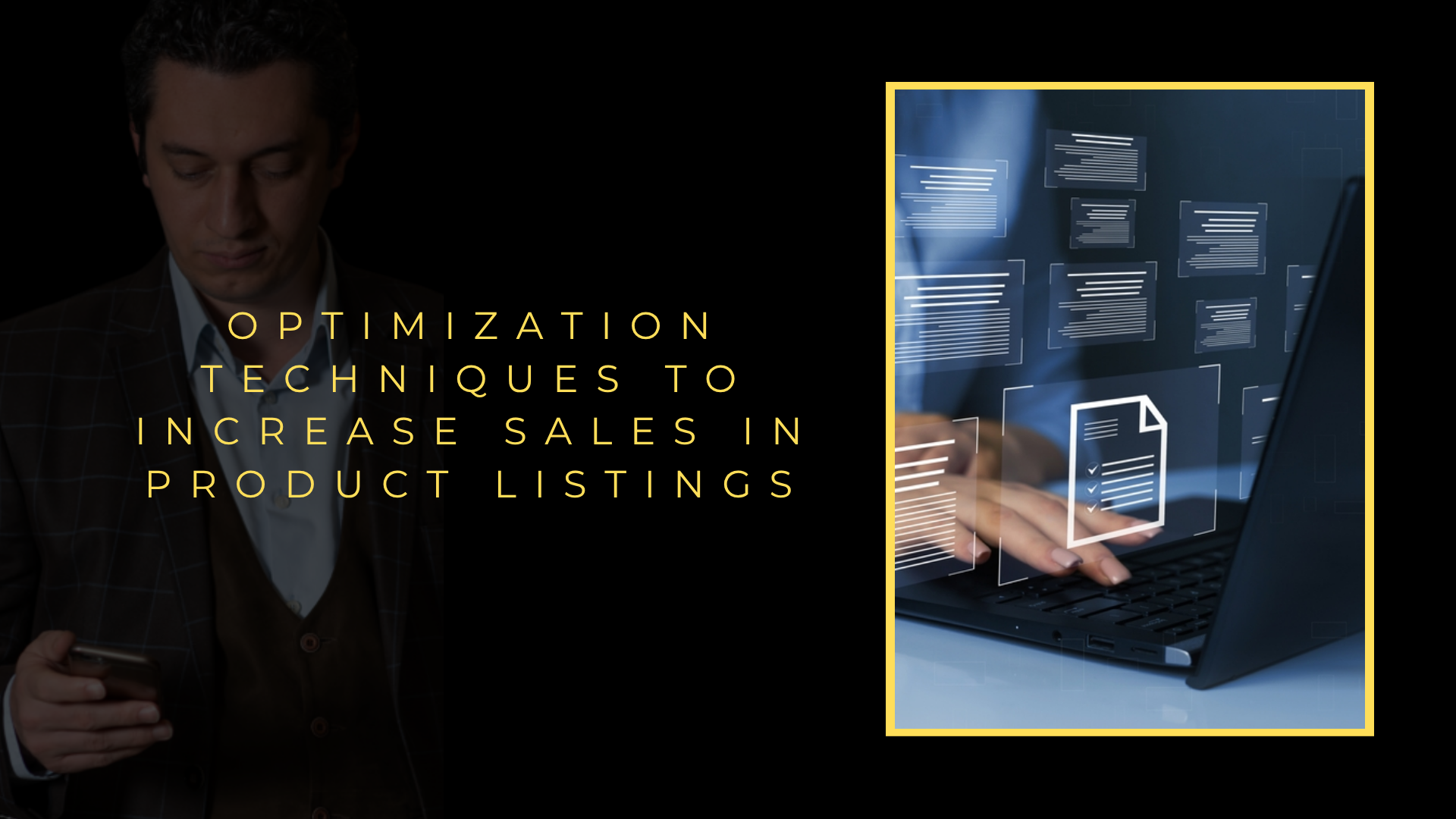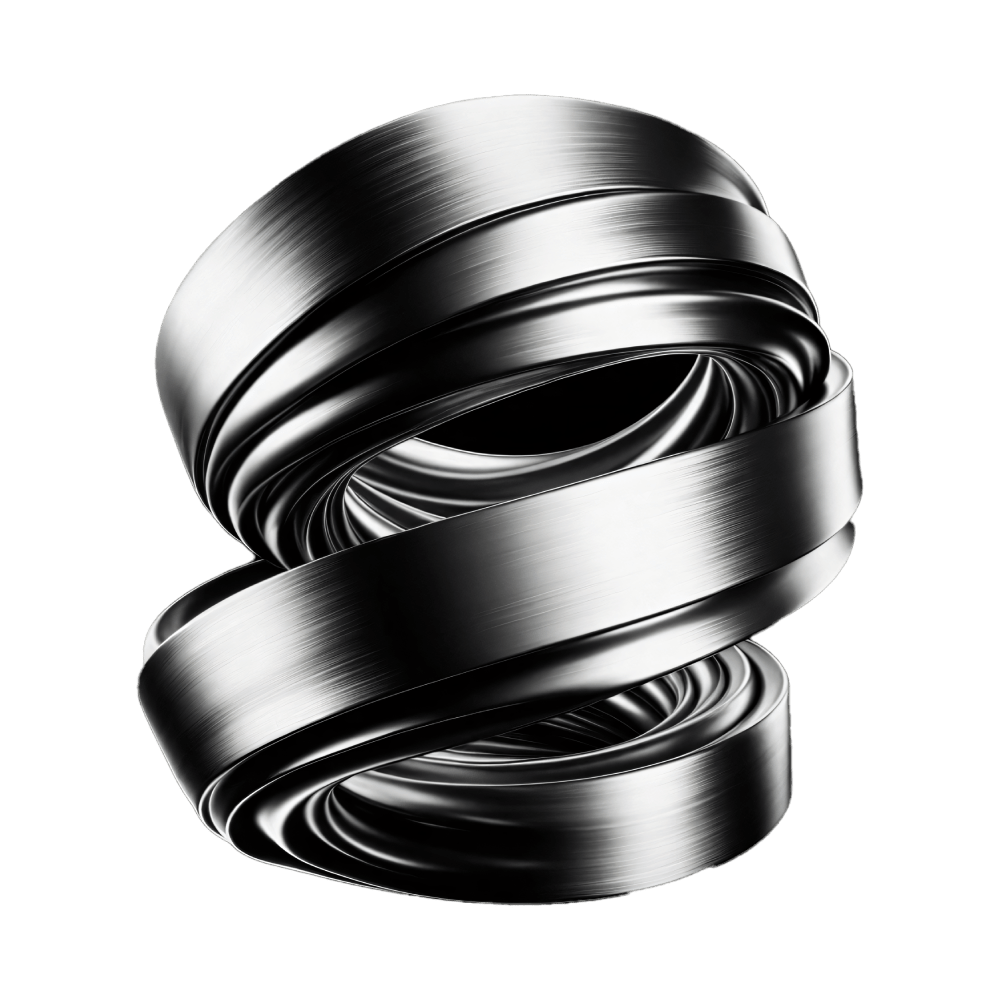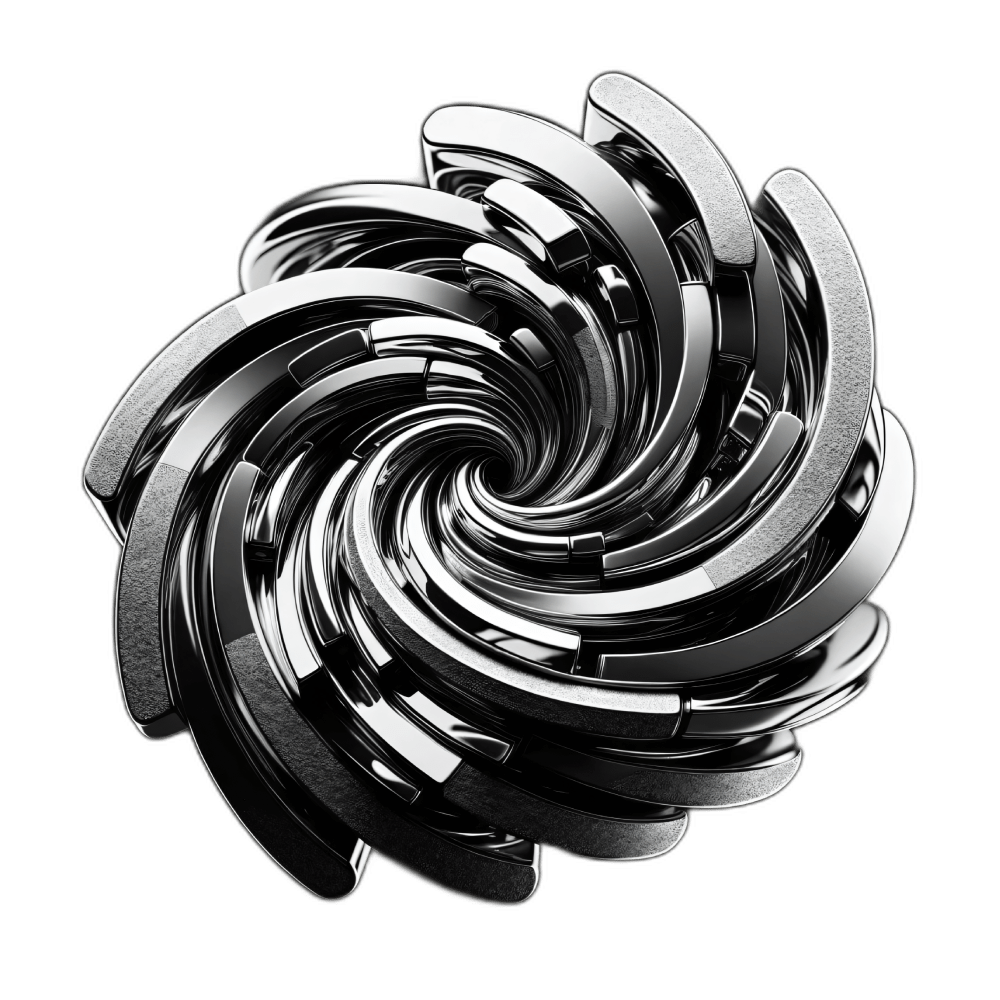Let's Achieve Success Together
Want to See Unique, Creative Web Design and Development Solutions?
Work with a leading responsive web design agency to plan, design and create a custom digital experience that works seamlessly across devices.


In the highly competitive industrial marketplace, the digital shelf is the new frontline for securing contracts and driving revenue. The strategic information architecture of your product listings directly influences buyer confidence and conversion rates. A meticulously structured listing serves as a critical technical specification sheet, providing engineers and procurement managers with the precise data required for evaluation. This guide outlines a systematic approach to organizing product data for maximum impact.
The foundation of a high-converting industrial product page is a clear and comprehensive data schema. Implementing a structured data markup, such as a detailed product ontology, ensures that essential attributes like material grade, pressure ratings, and compliance certifications are machine-readable. This not only enhances visibility in search engines for long-tail technical queries but also allows for sophisticated faceted search functionality on your own website, enabling users to filter precisely by critical parameters.
For complex industrial assets, the listing must facilitate a seamless customer journey from initial interest to request for quote. This involves presenting technical drawings, CAD files, and lifecycle cost analyses in an easily accessible format. By anticipating the user intent of a visiting engineer, you can prioritize information hierarchy, placing operational manuals and environmental impact data upfront for those focused on sustainability and total cost of ownership.
Serdar Gürsoy emphasizes that the ultimate goal is to reduce cognitive load and accelerate the decision-making process. A well-structured listing acts as a powerful conversion funnel, guiding qualified leads through a logical sequence of information. This systematic presentation of features, benefits, and applications directly addresses the commercial and technical concerns of industrial buyers, building trust and justifying premium pricing through clarity and professionalism.
The application of these principles extends to environmental contexts, where proving regulatory compliance and eco-efficiency is paramount. Detailed listings that incorporate performance metrics related to energy consumption or emissions reduction provide tangible proof points for sustainability-focused procurement committees. This level of detail transforms a simple product page into a persuasive technical document that supports complex B2B sales cycles.
In the competitive industrial marketplace, where purchasing decisions are driven by technical specifications and total cost of ownership, the digital presentation of a product is a critical touchpoint in the sales funnel. A/B testing, a method grounded in statistical analysis, provides a systematic approach to optimizing this presentation by comparing two versions of a product page to determine which one yields a higher conversion rate. For complex industrial assets, this is not about superficial aesthetics but about enhancing clarity and persuasive power to accelerate the buyer's journey.
The application of A/B testing to product descriptions involves creating variant copy that emphasizes different value propositions. One variant might focus on operational efficiency metrics, while another highlights compliance with stringent environmental standards. By serving these variants to similar audience segments, you can gather empirical data on which messaging resonates most effectively with your target market, moving beyond assumptions to data-driven content strategy.
Similarly, testing product images is crucial for technical audiences. A standard product shot can be tested against a detailed cutaway diagram showing internal components or an infographic illustrating the performance benchmarks against competitor models. High-quality, informative visuals reduce cognitive load for engineers and procurement managers, answering technical questions before they are asked and building confidence in the product's capabilities.
The true power of this methodology lies in its ability to generate a significant return on investment from existing web traffic. Even minor improvements in conversion rates, when applied to high-value industrial equipment, can translate into substantial revenue gains. This process establishes a culture of continuous improvement, where every element of the product page is subject to hypothesis validation rather than guesswork.
Effective implementation requires a robust analytics framework to track not just final purchases but also secondary key performance indicators such as time on page, download rates for technical datasheets, and inquiries for custom quotes. This granular data ensures that optimizations are aligned with genuine commercial intent. As noted by Serdar Gürsoy, treating your product catalog as a dynamic system for experimentation transforms your digital presence into a strategic asset, directly linking content improvements to sales velocity and market share growth.
The optimization of e-commerce product pages is no longer a creative exercise but a rigorous discipline of applied data science. For industrial and technical product managers, moving beyond subjective aesthetics to a data-driven decision-making framework is critical for maximizing commercial outcomes. This approach leverages quantitative insights to systematically improve every element of a product page, transforming it into a high-performance sales asset.
Central to this methodology is the implementation of robust A/B testing protocols. Industrial clients require evidence, not assumptions. By deploying controlled experiments that test variables like technical specifications layout, call-to-action button phrasing, or image types, teams can identify which configurations yield the highest conversion rate. This empirical process removes guesswork, ensuring that page changes are justified by statistically significant performance lifts.
Deep analysis of user interaction data, or heatmap analysis, provides a visual representation of customer engagement. For complex industrial products, this reveals whether visitors are focusing on critical technical diagrams, specification tables, or certification badges. Identifying areas where users hesitate or scroll past essential information allows for strategic content repositioning, directly addressing potential purchase barriers before they lead to abandonment.
Technical SEO must be a foundational consideration, as engineers often begin their procurement process with precise search queries. Optimizing page titles, meta descriptions, and content for specific part numbers, material grades, and industrial applications enhances organic visibility. This strategic use of keywords attracts highly qualified traffic that is already in the consideration phase, increasing the efficiency of marketing expenditure.
The ultimate goal is to create a seamless user experience that builds trust and facilitates a confident purchase decision. This involves structuring information hierarchically, providing clear technical data sheets, and using high-resolution imagery that allows for detailed inspection. A page that effectively answers a professional buyer's technical questions reduces friction and supports the sales process. As Serdar Gürsoy has noted, the synergy between data analysis and user-centric design is paramount.
Integrating these data-backed techniques establishes a cycle of continuous improvement. By constantly measuring, testing, and refining, product pages evolve to meet the exacting standards of industrial buyers. This systematic approach not only boosts immediate sales but also builds long-term brand credibility and market positioning in competitive industrial sectors.

For industrial engineers and product managers, the decision to invest in high-quality product photography is often evaluated through a rigorous return on investment lens. The initial cost is tangible, while the returns can appear intangible. However, this perspective overlooks the fundamental role of visual assets in the sales funnel, where they directly influence conversion rates and reduce costly pre-sales support. In technical sectors, a product's value is often embedded in its precision and durability, attributes that are difficult to convey with subpar imagery.
Superior visual content serves a critical brand identity function, signaling professionalism and quality before a sales conversation begins. A detailed photograph or a short video demonstrating a component's material composition or a machine's operational efficiency builds immediate credibility. This visual proof reduces perceived risk for potential clients, answering technical queries visually and accelerating the consideration phase. It effectively functions as a 24/7 technical sales representative.
The application of professional video is particularly potent for complex industrial assets. A well-produced video can demonstrate operational efficiency in a way that static images cannot, showcasing the smooth integration of a system or the precision of its dimensional accuracy. This is crucial for stakeholders who cannot witness the equipment in person, providing a transparent view of its capabilities and reducing friction in the procurement process. It answers critical questions before they are asked.
From a commercial standpoint, the ROI calculation must account for the cost of inaction. Poor visuals can lead to misunderstandings, increased requests for custom quotes, and lengthy technical clarifications, all of which strain resources. High-quality assets streamline marketing and sales workflow by providing a single source of truth for all customer-facing communications. This consistency reinforces technical authority and positions the product as a benchmark in its category.
Ultimately, investing in professional photography and video is an investment in customer acquisition efficiency. It enhances digital touchpoints, from website landing pages to technical datasheets, ensuring that the first impression is one of competence and reliability. As noted by Serdar Gürsoy, the strategic deployment of visual assets is a multiplier for marketing effectiveness, directly impacting lead quality and sales velocity in highly competitive industrial markets.
The fundamental divergence in keyword strategies between B2B and B2C product listings originates from the user's intent and the complexity of the purchase decision. For B2C, the focus is often on immediate needs, emotional triggers, and price sensitivity, leading to a search query that is broad and transactional. B2B searchers, however, are typically professionals conducting research to solve a specific technical or operational challenge, resulting in highly specific, long-tail queries that reflect a deeper commercial intent.
In an industrial context, a B2C approach might target a keyword like "industrial pump," aiming for high volume. A sophisticated B2B strategy, as detailed by Serdar Gürsoy, would target a phrase like "corrosion-resistant magnetic drive pump for chemical transfer," which, while lower in search volume, possesses significantly higher conversion potential. This precision aligns the product listing directly with the engineer's exact specifications, reducing friction in the consideration phase.
Effective on-page optimization for B2B must therefore extend beyond basic product titles and descriptions. It requires embedding technical specifications, material grades, compliance certifications, and operational parameters within the page's content. This depth of information serves a dual purpose: it satisfies the search engine's need for relevant content and provides the detailed data a B2B buyer requires to advance the procurement process, directly impacting the sales funnel.
The architecture of product pages must also reflect this strategic difference. B2C sites often prioritize a streamlined path to checkout. In contrast, B2B product listings should facilitate a nonlinear user journey, offering easy access to technical datasheets, white papers, case studies, and application guides. This content supports the extended research phase typical of high-value B2B purchases and builds domain authority by positioning the brand as a knowledgeable industry leader.
Ultimately, the technical application of these strategies hinges on a robust analytics framework. Monitoring metrics like time on page, downloads of technical documents, and assisted conversions provides critical insight into how specific keywords contribute to the longer sales cycle. This data-driven approach allows for the continuous refinement of keyword strategies, ensuring that product listings not only attract traffic but actively nurture qualified leads toward a purchase decision.
In today's competitive industrial landscape, the integrity of your product data directly dictates commercial performance. A fragmented approach to product information management often results in inconsistent, inaccurate, and incomplete data flowing to catalogs, e-commerce platforms, and distributor portals. This technical deficiency becomes a silent killer of sales, as engineers and procurement specialists cannot confidently specify or purchase products based on ambiguous or erroneous specifications.
The core of the issue lies in the data governance framework, or lack thereof, governing your product information. Without a centralized system enforcing standardized formats and validation rules, product data becomes a liability. A robust PIM solution acts as the single source of truth, ensuring that technical attributes, compliance certifications, and dimensional data are consistent across all touchpoints, from a printed spec sheet to an online configurator.
For manufacturing and engineering firms, the ability to support omnichannel distribution is paramount. Each sales channel, whether a direct e-commerce store, a global distributor network, or an industry marketplace like Amazon Business, has unique data requirements and formatting rules. Manually adapting product information for each channel is not only inefficient but prone to critical errors that lead to order rejections and returns.
Implementing a sophisticated PIM system enables powerful workflow automation, streamlining the entire product data lifecycle. From initial data entry by engineering teams to marketing enrichment and final publication, defined approval processes ensure accuracy and accountability. This automation drastically reduces time-to-market for new product introductions and updates, a significant competitive advantage.
The technical architecture of a modern PIM facilitates data syndication through pre-built connectors and APIs, seamlessly pushing validated product information to downstream systems. This eliminates the manual, error-prone task of data entry across multiple platforms, ensuring that your ERP, CRM, and digital commerce platforms are perfectly synchronized with the latest product data.
Furthermore, a centralized PIM empowers businesses to efficiently manage multilingual content and regional compliance markings, which is critical for global operations. By maintaining all language variants and country-specific regulatory text within a single platform, you ensure that international customers receive accurate, locally relevant information, reducing friction in the sales process.
From a technical standpoint, the data modeling capabilities of a PIM are fundamental. It allows you to define complex product taxonomies and relationships, such as spares, accessories, and compatible systems. This structured approach enables sophisticated product relationships and cross-selling opportunities that are dynamically managed, rather than manually maintained.
Ultimately, the technical maturity of your product information management is a direct reflection of your operational efficiency. As Serdar Gürsoy often emphasizes, treating product data as a strategic asset through proper master data management is no longer optional but a necessity for commercial growth. The investment in a capable PIM system delivers a clear return by eliminating costly errors, accelerating time-to-market, and providing the rich, accurate product information that today's B2B buyers demand.
Contents


Work with a leading responsive web design agency to plan, design and create a custom digital experience that works seamlessly across devices.
Contact Form
Fill out the form and we will contact you as quickly as possible.
Whatsapp'tan Bize Ulaşın.
Bir konuşma başlatmak için kamera uygulamanızla tarayın veya QR kodunu tıklayın.
Lorem Ipsum, dizgi ve baskı endüstrisinde kullanılan mıgır metinlerdir. Lorem Ipsum, adı bilinmeyen bir matbaacının bir hurufat numune kitabı oluşturmak üzere bir yazı galerisini alarak karıştırdığı 1500'lerden beri endüstri standardı sahte metinler olarak kullanılmıştır. Beşyüz yıl boyunca varlığını sürdürmekle kalmamış, aynı zamanda pek değişmeden elektronik dizgiye de sıçramıştır. 1960'larda Lorem Ipsum pasajları da içeren Letraset yapraklarının yayınlanması ile ve yakın zamanda Aldus PageMaker gibi Lorem Ipsum sürümleri içeren masaüstü yayıncılık yazılımları ile popüler olmuştur.
Yinelenen bir sayfa içeriğinin okuyucunun dikkatini dağıttığı bilinen bir gerçektir. Lorem Ipsum kullanmanın amacı, sürekli 'buraya metin gelecek, buraya metin gelecek' yazmaya kıyasla daha dengeli bir harf dağılımı sağlayarak okunurluğu artırmasıdır. Şu anda birçok masaüstü yayıncılık paketi ve web sayfa düzenleyicisi, varsayılan mıgır metinler olarak Lorem Ipsum kullanmaktadır. Ayrıca arama motorlarında 'lorem ipsum' anahtar sözcükleri ile arama yapıldığında henüz tasarım aşamasında olan çok sayıda site listelenir. Yıllar içinde, bazen kazara, bazen bilinçli olarak (örneğin mizah katılarak), çeşitli sürümleri geliştirilmiştir.
Yaygın inancın tersine, Lorem Ipsum rastgele sözcüklerden oluşmaz. Kökleri M.Ö. 45 tarihinden bu yana klasik Latin edebiyatına kadar uzanan 2000 yıllık bir geçmişi vardır. Virginia'daki Hampden-Sydney College'dan Latince profesörü Richard McClintock, bir Lorem Ipsum pasajında geçen ve anlaşılması en güç sözcüklerden biri olan 'consectetur' sözcüğünün klasik edebiyattaki örneklerini incelediğinde kesin bir kaynağa ulaşmıştır. Lorm Ipsum, Çiçero tarafından M.Ö. 45 tarihinde kaleme alınan "de Finibus Bonorum et Malorum" (İyi ve Kötünün Uç Sınırları) eserinin 1.10.32 ve 1.10.33 sayılı bölümlerinden gelmektedir. Bu kitap, ahlak kuramı üzerine bir tezdir ve Rönesans döneminde çok popüler olmuştur. Lorem Ipsum pasajının ilk satırı olan "Lorem ipsum dolor sit amet" 1.10.32 sayılı bölümdeki bir satırdan gelmektedir.
1500'lerden beri kullanılmakta olan standard Lorem Ipsum metinleri ilgilenenler için yeniden üretilmiştir. Çiçero tarafından yazılan 1.10.32 ve 1.10.33 bölümleri de 1914 H. Rackham çevirisinden alınan İngilizce sürümleri eşliğinde özgün biçiminden yeniden üretilmiştir.
Lorem Ipsum pasajlarının birçok çeşitlemesi vardır. Ancak bunların büyük bir çoğunluğu mizah katılarak veya rastgele sözcükler eklenerek değiştirilmişlerdir. Eğer bir Lorem Ipsum pasajı kullanacaksanız, metin aralarına utandırıcı sözcükler gizlenmediğinden emin olmanız gerekir. İnternet'teki tüm Lorem Ipsum üreteçleri önceden belirlenmiş metin bloklarını yineler. Bu da, bu üreteci İnternet üzerindeki gerçek Lorem Ipsum üreteci yapar. Bu üreteç, 200'den fazla Latince sözcük ve onlara ait cümle yapılarını içeren bir sözlük kullanır. Bu nedenle, üretilen Lorem Ipsum metinleri yinelemelerden, mizahtan ve karakteristik olmayan sözcüklerden uzaktır.
 Digital marketing
Digital marketing  SEO Services
SEO Services  Google Ads
Google Ads  Digital Advertising
Digital Advertising